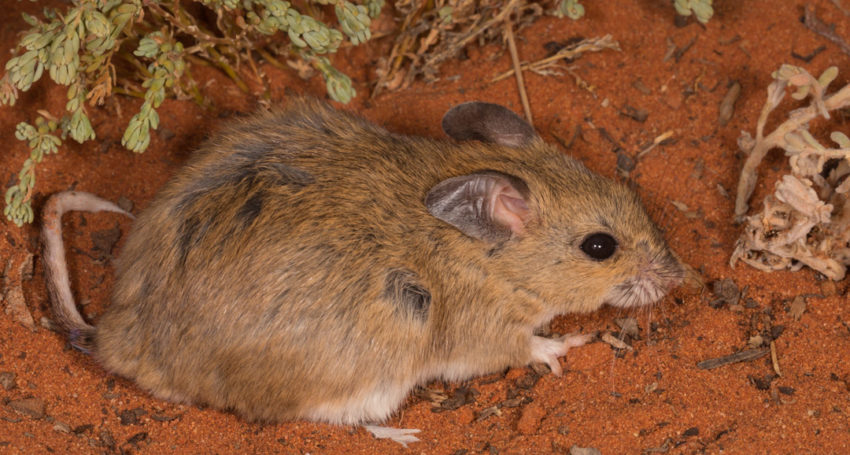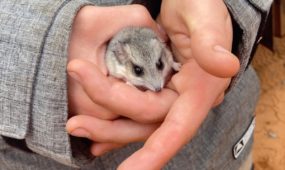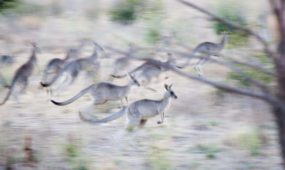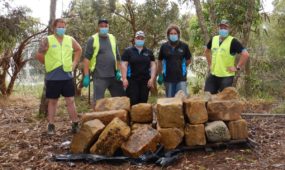Threatened outback mouse roars again
Environment
A THREATENED species of Australian mouse has shored up its survival by sneaking through the fence of an outback conservation reserve… and now it’s thriving

Sign up to receive notifications about new stories in this category.
Thank you for subscribing to story notifications.

The Plains Mouse (pseudomys australis) is one of the largest rodents still inhabiting the arid zone and was once widespread throughout the arid and semi-arid regions of Australia.
It is now considered a vulnerable or endangered species across much of Australia’s interior and was declared extinct in the eastern states of Victoria and New South Wales in the 1990s.
But the small nocturnal creatures have found their way to a fenced reserve in South Australia’s arid north where they now number in the thousands.

Arid Recovery is a 123sq km fenced conservation reserve about 550km north of the South Australian capital Adelaide. Feral cats and foxes, which were largely responsible for pushing the Plains Mouse to the brink of extinction, have been removed from 60sq km of the reserve.
The Plains Mouse, which feeds mostly on seeds and green plant material and weighs between 30 and 50 grams, had not been sighted in the immediate vicinity for many decades before turning up at the park in 2006.
It is believed the small nocturnal rodents were able to extend their range in the late 1990s following the spread of the calicivirus (RHDV), which devastated rabbit populations in Australia and also led to a reduction in feral cat and fox numbers.
Arid Recovery Manager Katherine Tuft said a single Plains Mouse was found in the region in the late 1990s before the small rodents were discovered inside the reserve in 2006.
Now there are thousands of Plains Mice in the reserve, making it the densest known population of the species.
The latest Plains Mouse survey in March trapped 236 of the rodents – 228 inside and 8 outside the reserve. This was by far the most ever recorded at the site.
“They’re classic boom/bust species so they’ll hide in little refuge pockets in the landscape in dry years and they are pretty good at breeding up quickly when times are good and they spread out,” Dr Tuft said.

“We think that a combination of good rainy years and the knockdown of the rabbits and the concurrent drop in cat and fox numbers have allowed these animals to spread out and turn up on our doorstep.
“Because there are fewer predators at Arid Recovery they are able to stay in high numbers.”
Arid Recovery is near Roxby Downs, about 550km north of the South Australian capital Adelaide. It runs several programs to reintroduce threatened native species such as the Greater Bilby and Western Barred Bandicoot. However, the Plains Mouse boom is the first time a threatened species has reintroduced itself.
Dr Tuft said the thriving native animals within the confines of the protected reserve highlighted the devastating impact feral pests such as rabbits, foxes and cats had on native flora and fauna.
“Anyone who comes in and sees the Plains Mouse and the larger re-introduced mammals will see a landscape as it once was,” she said.
“It’s amazing to see all the digs and tracks and at night all the animals.
“Then when you get back outside to what you think is normal you realise it’s like a ghost town.”

The Plains Mouse has become so prolific in the reserve that it is starting to out-compete some smaller species of native rodents, prompting Arid Recovery staff to use it as an opportunity to re-introduce locally threatened predator species such as the Western Quoll and Kowari.
“Whenever these animals move around, the food web changes and there are winners and losers and it looks like some of those little native rodents are losing in this case,” she said.
“There are some natural predators for the Plains Mouse in the reserve already such as goannas, eagles and snakes and they certainly do eat plenty but evidently they could do with a little bit more predation pressure.”
A Korean strain of the calicivrus, RHDV1 K5, was recently released at more than 600 sites in Australia.
Dr Tuft said although the new calicivirus was unlikely to be as successful as the 1990s virus, it would help.
“It should still have a really solid impact on the rabbit population and that will have flow on impacts on the feral predators so it can only be good news for these native animals,” she said.
“There might be a window where the predators are still in the landscape when the rabbits aren’t – those predators will be hungry so for some of the more vulnerable populations that could be a difficult time.”
This expected dip in the population of feral predators outside the protective fences of Arid Recovery, is likely to provide a further opportunity for the Plains Mouse to spread.
“Because they can go through the fence easily we suspect they might be seeding the surrounding landscape – they might well already be starting to have an impact beyond the fence and we’ll be heading out to measure that in the next few years,” Dr Tuft said.
“There’s also a nationally co-ordinated group of scientists working on identifying productive refuges particularly in the arid landscapes and part of that is identifying spots where they could relocate things like the Plains Mouse into areas where they have gone extinct.”
A National Recovery Plan for the Plains Mouse was launched in 2012.
An above average year of rainfall has also helped Plains Mouse numbers stabilise in other areas as well.
Natural Resources Arid Lands Scientific Services Manager Rob Brandle said the Arid Recovery Plains Mouse population was among the densest and probably the longest running high population.
He said the Plains Mouse had also enjoyed a recovery, albeit less significant, in other parts of inland Australia thanks to several good rainfall seasons and a reduction in rabbit numbers.
Fewer rabbits meant more food for other herbivores, more cover and also a reduction of predators such as foxes and cats, Brandle said.
“When I first started working on the Plains Mouse in the 1990s we found them in little isolated refuges in cracking clays where they were able to hide and gather seed from within the cracks.”
“But it seems that in the past decade they’ve been able to move out of those cracks into other areas.
“The important thing will be how many of those populations can survive the next prolonged drought but it’s looking good at the moment.”
Jump to next article



